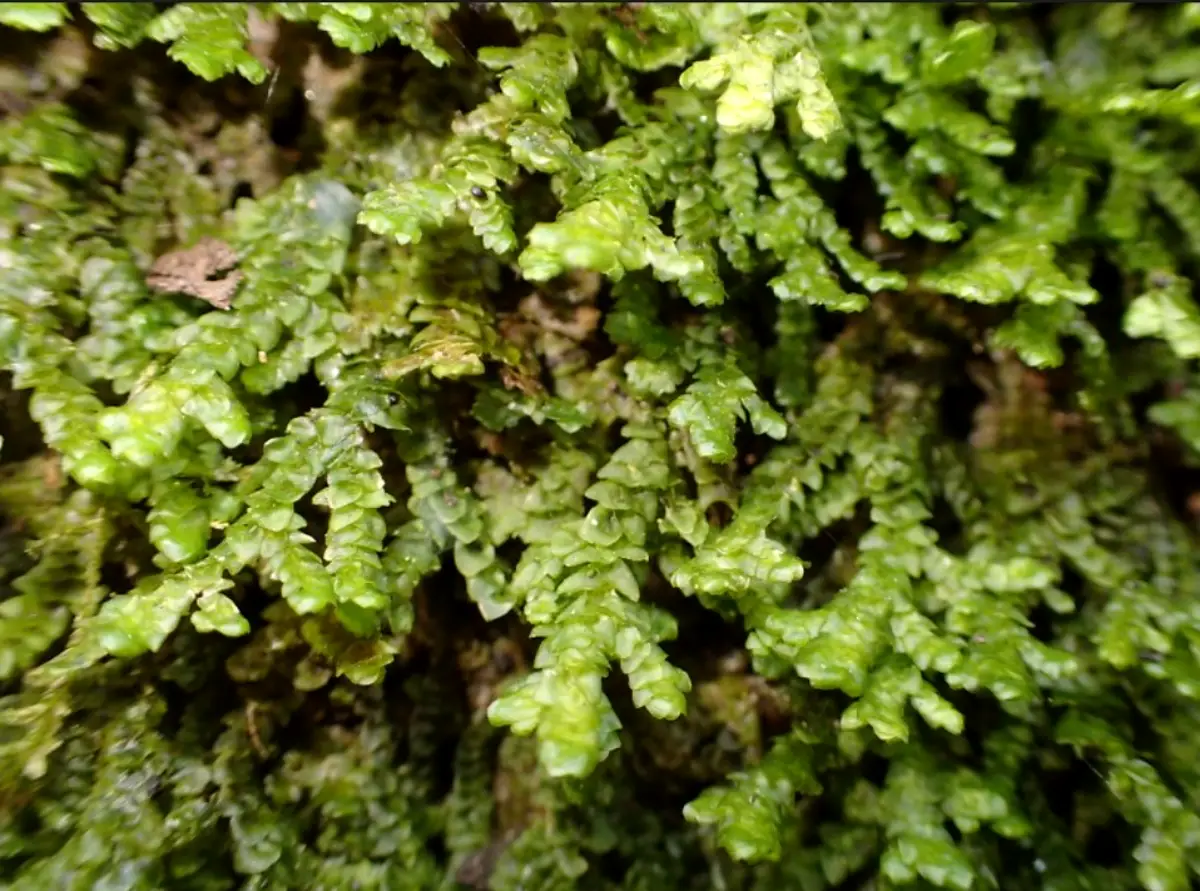Contents
CLASSIFICATION OF PORELLA (MADOTHECA)
Kingdom :- Plantae
Division :- Bryophyta
Class :- Hepaticopsida
Order :- Jungermanniales
Family :- Porellaceae
Genus :- Porella
EXTERNAL MORPHOLOGY OF PORELLA (MADOTHECA)
- The plants are large, prostrate, dorsiventral and grow in compact greenish patches.
- Thallus is differentiated into a branched stem and leaves, arranged in 3 rows.
- Out of the three rows of leaves, the two are dorsal and one is ventral. These ventral smaller leaves are known as the amphigastria.
- The dorsal leaves are incubously arranged (the anterior margin of the lower leaf is covered by the posterior margin of the leaf next above it, when seen from above) and each is divided into a larger (antical) lobe and a smaller (postical) lobule.
- The lobe is usually ovate with rounded apex while the lobule is narrower with acute apex.
- Many rhizoids are present on the lower side of the stem.
ANATOMY OF AXIS
- The axis is differentiated into an epidermis, cortex and medulla.
- The cortical cells are usually small and thick walled, in comparison to the large, thin-walled medullary cells.
ANTHERIDIAL BRANCH AND ANTHERIDIUM
- The genus is dioecious and the male and female plants can be externally differentiated.
- The male plants are usually smaller with the antheridial branches projecting nearly at right angles from the main axis.
- The antheridial branch has many closely arranged bracts.
- In the axil of each bract, antheridium is present.
- Each antheridium consists of a long stalk, composed of two rows of cells subtending at its apex a globular body.
- The body has a jacket layer composed of 2-3 layers in the basal part and one layer in the upper part.
- Within the jacket are present many androcytes which ultimately go to form the biciliate antherozoids.
ARCHEGONIAL BRANCH AND THE ARCHEGONIUM
- The genus is dioecious. The female plants are distinct from the male plants.
- Female plants are usually larger though archegonial branches are shorter than the antheridial branches.
- The archegonia are found at the apex of archegonial branch.
- The first few archegonia are arranged acropetally and the last archegonium is formed by the apical cell itself, thus checking the further growth of archegonial branch.
- The archegonium consists of a broad neck and the venter.
- The neck consists of five vertical rows of cells, typical of jungermanniales, and encloses 6-8 neck canal cells.
- The venter wall is two layered. It encloses a venter canal cell and an egg cell.
L.S. SPOROPHYTE OF PORELLA (MADOTHECA)
- The sporophyte consists of a small foot, a short seta and a globose capsule.
- The young sporophyte is covered by calyptra and perianth.
- The calyptra developed from venter of archegonium is more than one layered thick. It surrounds the sporophyte until its maturity.
- The perianth is formed by the fusion of two uppermost perichaetial bracts and is more or less dorsiventrally compressed, in the anterior region.
- The capsule is globose and consists of a jacket layer, two or six cells in thickness.
- Enclosed within the jacket are many spores and elaters, the latter help in dispersal of spores.
SPORE AND AN ELATER OF PORELLA (MADOTHECA)
- A spore measures from 40 to 55 microns in diameter.
- Each spore has an outer, smooth or papillose exospore and an inner, smooth endospore. Sometimes a third layer may also be present. It is known as outer exospore or perinuium.
- Inside the wall layers, is a single nucleus embedded in rich cytoplasm.
- An elater is a longitudinally stretched and coiled structure with 2-3 spiral thickening bands.
IDENTIFICATION
- DIVISION – Bryophyta
- True roots absent and instead are present the rhizoids.
- No true vascular strands.
- Class:- Hepaticopsida
- Rhizoids without septa
- Chloroplasts without pyrenoids
- Columella absent from capsule and there are stomata on capsule wall.
- Order– Jungermanniales
- Scales absent.
- Rhizoids smooth walled.
- Antheridia and archegonia are borne at the apices
- Archegonial neck consists of 5 vertical rows of cells.
- Sub order :- Jungennannineae (Jungermanniales Acrogynae)
- Gametophyte with stem and two rows of dorsal, and a third ventral row of leaves.
- Archegonia in a terminal cluster and the last archegonium is formed by the apical cell.
- Family – Porellaceae
- Rhizoids are scarce and form tufts at the bases of amphigastria.
- Leaves incubously arranged.
- Locule (postical lobe) is distinct.
- Perianth large, inflated with compressed mouth and is bilabiate.
- Genus – Porella
- Characters same as those of Porellaceae.


Leave a Reply